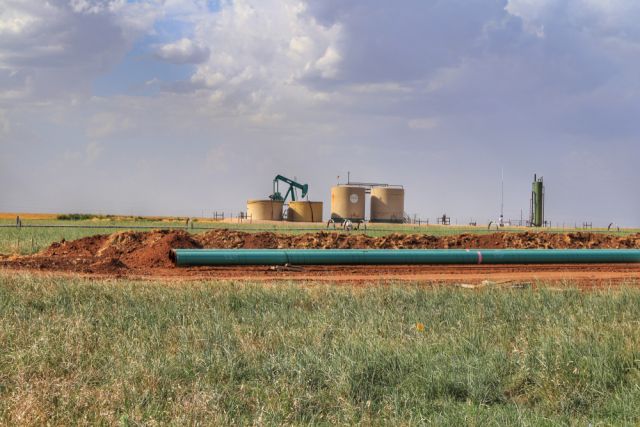
Permian gas producers exporting piped gas to Mexico can rest assured that demand south of the border will remain robust even under a new Mexican president, Wood Mackenzie says. (Source: Shutterstock)
Permian producers exporting piped gas to Mexico can rest assured that demand for U.S. gas south of the border will not change much under the next Mexican president.
Mexico’s presidential elections are June 2. The next president will be elected to serve a six-year term.
“Mexico’s oil and gas demand is forecast to grow at 2% during the current decade,” Adrian Lara, Wood Mackenzie principal analyst, upstream Latin America, wrote May 23 in a research report.
“However, hydrocarbon production is set to continue to decline throughout the decade, making it difficult for the nation to meet its increasing domestic refining demands and natural gas demands in the power and industrial sectors,” Lara said. “In this environment, Mexico will be unable to reduce gas imports.”
Lara said state-owned Petroleos Mexicanos (Pemex), the world’s most indebted energy company, is restrained in its ability to assume risks and fund needed investments to expand Mexico’s energy infrastructure and production.
“Mexico is facing several energy challenges, including declining oil and gas production, a need to increase exploration activity, a high dependence on gasoline imports, a constrained power supply and public pressure to transition to renewable energy,” Lara said.
Mexico currently imports around 6.8 Bcf/d from the U.S., according to the U.S. Energy Information Administration. Importantly, an additional 7.8 Bcf/d could be needed to fund numerous LNG export facilities planned for Mexico’s Pacific coast.
RELATED
Permian Gas Finds Another Way to Asia
Increased private sector involvement needed
The private sector has mostly been sidelined under Mexican President Andrés Manuel López Obrador (AMLO) amid his nationalistic tone. And presidential frontrunner Claudia Sheinbaum, of the same Morena Party as AMLO, isn’t expected to drastically change course. In fact, many analysts expect her to offer policy continuity.
For onlookers, Australia’s Woodside Energy might be a case in point about a private investor or international oil company betting on Mexico’s hydrocarbon potential, especially offshore. Woodside has already taken a $7.2 billion final investment decision on its Trion development, offshore Mexico, with partner Pemex.
Woodside expects production from Trion will be processed through a floating production unit (FPU) with a nameplate capacity of 100,000 bbl/d, its CEO and Managing Director Meg O’Neill recently told Hart Energy in an exclusive interview.
The FPU can process up to 120,000 bbl/d when Woodside is producing early in the field’s life with no water breakthrough. First oil is slated for 2028, according to O’Neill.
“Regardless of the presidential election outcome, there is a need for the new government to re-assess not only the role but also the terms for increasing private investment in the energy sector,” Lara said.
Recommended Reading
Court Weighs Postponing Citgo Auction Bid Hearing to September
2024-06-28 - A U.S. court has been asked to postpone a hearing to present the high bid in an auction of shares in the parent of Venezuela-owned refiner Citgo Petroleum.
Hirs: What Regulators Get Wrong—Energy Networks Are Tough To Control
2024-06-24 - Energy professionals depend upon interconnected markets and often profit from arbitrage opportunities long before market participants and regulators can effectively address them.
Gaps in EU's Preparation for Potential Gas Crises, Auditors Say
2024-06-24 - Despite the EU's overall reliance on Russia dropping significantly, auditors say the EU is insufficiently prepared to weather a future gas crisis.


